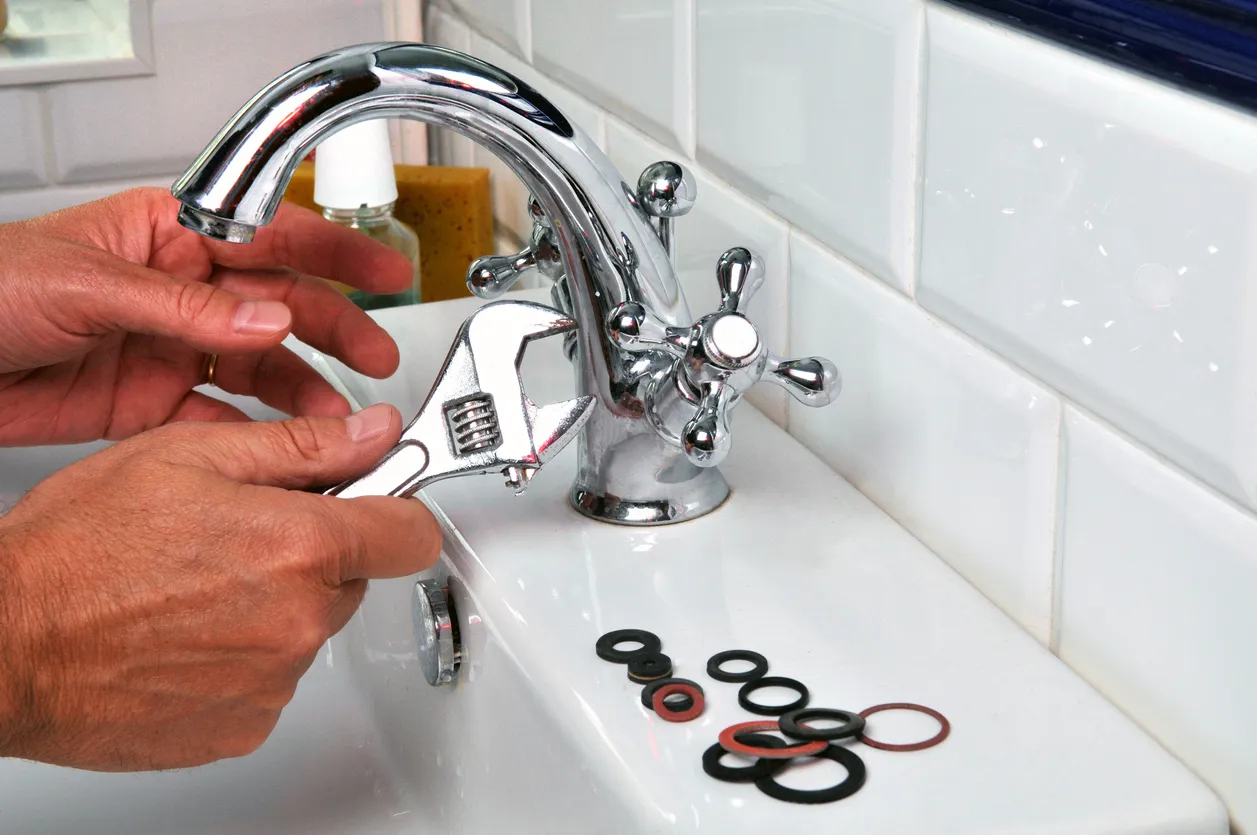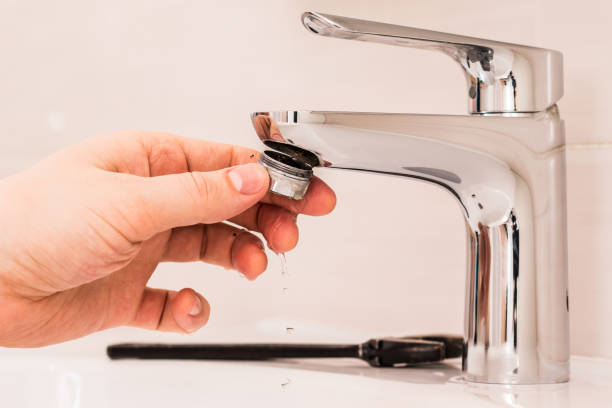When It's Essential to Address a Broken Faucet
When It's Essential to Address a Broken Faucet
Blog Article
They are making several good points relating to How to Fix a Dripping or Leaky Faucet overall in the article underneath.

Dripping faucets may appear like a small trouble, yet their impact goes beyond just the annoyance of the sound. From wasting water to sustaining unneeded economic prices and wellness dangers, neglecting a leaking faucet can result in various consequences. In this write-up, we'll explore why it's important to address this usual family issue without delay and successfully.
Wastage of Water
Ecological Effect
Dripping taps contribute considerably to water wastage. According to the Environmental Protection Agency (EPA), a solitary tap leaking at one drip per second can waste greater than 3,000 gallons of water annually. This not only pressures water sources however also influences ecological communities and wildlife dependent on them.
Financial Costs
Increased Water Bills
Beyond the ecological influence, leaking faucets can blow up water bills considerably. The built up wastage with time translates into greater energy expenditures, which can have been avoided with prompt repairs.
Prospective Residential Or Commercial Property Damage
In addition, prolonged leaking can cause harm to fixtures and surfaces bordering the tap. Water build-up can cause discoloration, corrosion, and also architectural problems if left unattended, causing extra repair work prices.
Health and wellness Problems
Mold And Mildew and Mildew Growth
The constant visibility of moisture from a trickling faucet develops a suitable environment for mold and mildew and mold growth. These fungis not only jeopardize interior air quality yet also present health dangers, specifically for people with respiratory conditions or allergic reactions.
Waterborne Conditions
Stagnant water in dripping taps can become a breeding ground for germs and various other microorganisms, raising the threat of waterborne diseases. Contaminants such as Legionella bacteria thrive in stagnant water, potentially leading to major health problems when consumed or inhaled.
DIY vs. Specialist Repair work
Pros and Cons of DIY Fixing
While some may attempt to take care of a trickling faucet themselves, DIY fixings come with their own set of difficulties. Without correct expertise and tools, DIY efforts can exacerbate the problem or result in incomplete repair services, lengthening the problem.
Advantages of Working With an Expert Plumber
Employing an expert plumber makes certain that the underlying reason for the trickling faucet is attended to properly. Plumbing technicians have the expertise and devices to identify and fix tap issues efficiently, saving time and lessening the threat of more damages.
Step-by-Step Guide to Fixing a Dripping Tap
Devices Needed
Prior to trying to take care of a trickling tap, collect the needed tools, including an adjustable wrench, screwdrivers, replacement parts (such as washing machines or cartridges), and plumber's tape.
Common Faucet Issues and Their Solutions
Recognize the sort of faucet and the particular issue creating the drip. Usual troubles include worn-out washing machines, corroded valve seats, or malfunctioning O-rings. Refer to maker guidelines or online tutorials for step-by-step assistance on repair services.
Safety nets
Regular Maintenance Tips
To prevent leaking faucets, do regular upkeep such as cleaning aerators, inspecting for leaks, and replacing worn-out parts quickly. Additionally, consider installing water-saving devices or upgrading to extra reliable components.
Value of Prompt Fixes
Attending to trickling taps as soon as they're noticed prevents more water waste and prospective damage, inevitably saving both water and money in the future.
Effect On Residential Property Value
Assumption of Well-Maintained Residential Property
Preserving a residential property in good condition, including resolving maintenance concerns like dripping taps, boosts its viewed worth and desirability among possible purchasers or lessees.
Impact on Resale Value
Residences with well-maintained plumbing fixtures, including faucets, command greater resale values in the property market. Dealing with trickling faucets can add to a positive perception throughout residential or commercial property examinations and settlements.
Ecological Responsibility
Private Payment to Preservation
Taking responsibility for taking care of trickling faucets aligns with wider initiatives towards water conservation and environmental sustainability. Every person's activities jointly make a substantial impact on preserving precious resources.
Sustainable Living Practices
By prioritizing prompt repair work and embracing water-saving routines, people add to sustainable living techniques that profit both present and future generations.
Final thought
Resolving a trickling faucet exceeds plain comfort; it's a necessary step toward conserving water, lowering financial prices, and protecting wellness and home. Whether with DIY repair services or specialist support, taking action to deal with dripping faucets is a tiny yet impactful method to promote liable stewardship of resources and add to a healthier, much more lasting future.
How to Fix a Dripping or Leaky Faucet
A leaking faucet is one of the most common problems that homeowners encounter, but it being commonplace doesn’t make it any less annoying. The constant drip drip drip of a leaking bathtub faucet, showerhead, or sink tap can disturb your home’s serenity. Left neglected, a dripping faucet can also result in higher water bills and discoloration or mold growth in your sink or plumbing fixtures.
Fortunately, you don’t have to be a trained plumber to know how to stop a dripping faucet. With some basic tools, replacement parts, and a little patience, leaky faucet repair is a breeze. In this article, we’ll explain what causes dripping faucets and how you can fix them.
What Causes a Leaking Faucet?
Kitchen and bathroom faucets come in all manner of designs, but most involve some combination of valves, O-rings, seals, and washers. The O-ring is usually the weakest link, but any one of these pieces can wear down over time. Heat, moisture, temperature fluctuations, minerals, mold, and movement can contribute to warping and corrosion, breaking the watertight seal. This just comes with the territory of being a homeowner. Everything is always subject to wear and tear, and some component parts of your appliances and fixtures need to be replaced on occasion. At least replacement O-rings are cheap!
More rarely, dripping faucets can be a symptom of excessively high water pressure. Were this the case in your home, you would probably notice that the leak is not isolated to one faucet. Water pressure issues are harder to resolve on your own. We recommend contacting a professional plumber if you suspect your water pressure is too high.
How to Fix a Dripping Faucet
Pipe wrench or monkey wrench Allen wrench set Screwdrivers Old towel or rag Shut off the water.
Before you do anything, you need to turn off the water to keep from drenching your kitchen or bathroom. You should find a valve under the sink and against the wall. Once you’ve turned this valve, try turning the faucet on to confirm that the water source has been cut off.
If you can’t locate your local valve for the faucet you’re working on, you can always shut off the water to the house at the main valve. Of course, this will prohibit anyone from using the sinks, showers, or toilets while you’re working on the faucet that’s giving you trouble.
Plug or block the drain.
You’ll be disassembling the faucet and removing some small bits of hardware. Plug the drain with a stopper or rag to avoid the possibility of a small screw falling into your P-trap.
Take apart the faucet assembly.
There are several varieties of kitchen and bathroom faucets, each with its own manner of assembly. For detailed instructions on how to disassemble your faucet, you can refer to the fixture’s manual or contact the manufacturer. If you know whether you have a ball, disc, cartridge, or compression faucet, you can find detailed schematics online.
In general, you need to begin by removing the faucet handles. You might notice a small screw that you’ll need to remove with a screwdriver or Allen wrench. If you don’t see any visible securing hardware, it’s likely hidden under a decorative cap that can be unscrewed or popped off with flathead screwdriver.
Remove each piece methodically, consulting a schematic when necessary. Take notes or arrange the pieces in such a way to make it easier to correctly reassemble the faucet later.
Remove the cartridge.
Once you’ve removed the handles and securing hardware, you should be able to remove the valve cartridge or stem. Some cartridges will slide right out. Other faucet models will require you to loosen a nut with a pipe wrench before you can remove the valve stem.
Examine the exposed hardware.
With the cartridge or stem removed, inspect the component parts. Check the rubber O-rings for wear and tear. Also examine the seat washer for corrosion or other damage. These pieces are usually the responsible parties for a dripping faucet, but it’s worth inspecting the other component parts while you have the faucet disassembled.
Find replacement parts.
Once you’ve identified which faucet component has failed, find an identical replacement. Your local hardware store should have O-rings, seat washers, and other standard components in stock. If you have a luxury or uncommon faucet, you may have to contact the manufacturer for a replacement part.
It’s a good idea to take your old parts with you to the hardware store so you can compare them with the store’s inventory and be sure you’re purchasing the correct replacement.
Reassemble the faucet.
With your new parts in hand, reconstruct the faucet and handles. Don’t be tempted to overtighten screws or nuts. You might think this could create a better seal, but it can instead damage or bend a delicate part of the assembly and create a new problem for you.
Turn on the water and test the faucet.
The only thing left to do is test your work. Unplug the sink, turn the water back on, and try the faucet. Congratulate yourself on a job well done!
https://www.libertyhomeguard.com/how-to-fix-a-dripping-or-leaky-faucet/

Do you enjoy reading about ? Leave a remark down below. We would be delighted to hear your thinking about this write up. Hoping that you come back again in the near future. For those who liked our page if you please don't forget to pass it around. I recognize the value of your readership.
Report this page